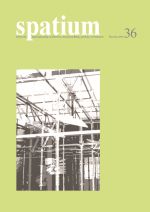A comparative analysis of architects’ views on wood construction
DOI:
https://doi.org/10.2298/SPAT1636100AKeywords:
sustainable architecture, ecological properties of buildings, contemporary timber products, architects’ views, advanced trainingAbstract
Even though wood is locally a traditional material, it is rarely used in architecture in Bosnia and Herzegovina, which is why the constructed buildings have poor ecological properties. The main objective of the research is to determine the views of architects on sustainability principles in architecture, contemporary products and wood construction systems. An online questionnaire was used to collect responses by architects from Bosnia and Herzegovina, Serbia and Austria. The research results confirm the hypothesis that architects in Bosnia and Herzegovina, and in Serbia alike, do not have sufficient knowledge on the principles of sustainable architecture, contemporary products and wood construction systems, which is why they do not use wood in their projects. The results of a comparative analysis suggest that there is a cause-and-effect connection between the architects’ views and the volume (scope) of the use of wood, and that the use of wood in constructing buildings in Austria is not only a result of better technical and technological equipment but also of the different views held by the architects. The value of the research results is that they point to the fact that by improving architects’ knowledge we may improve architectural sustainability by using wood to a greater extent.


